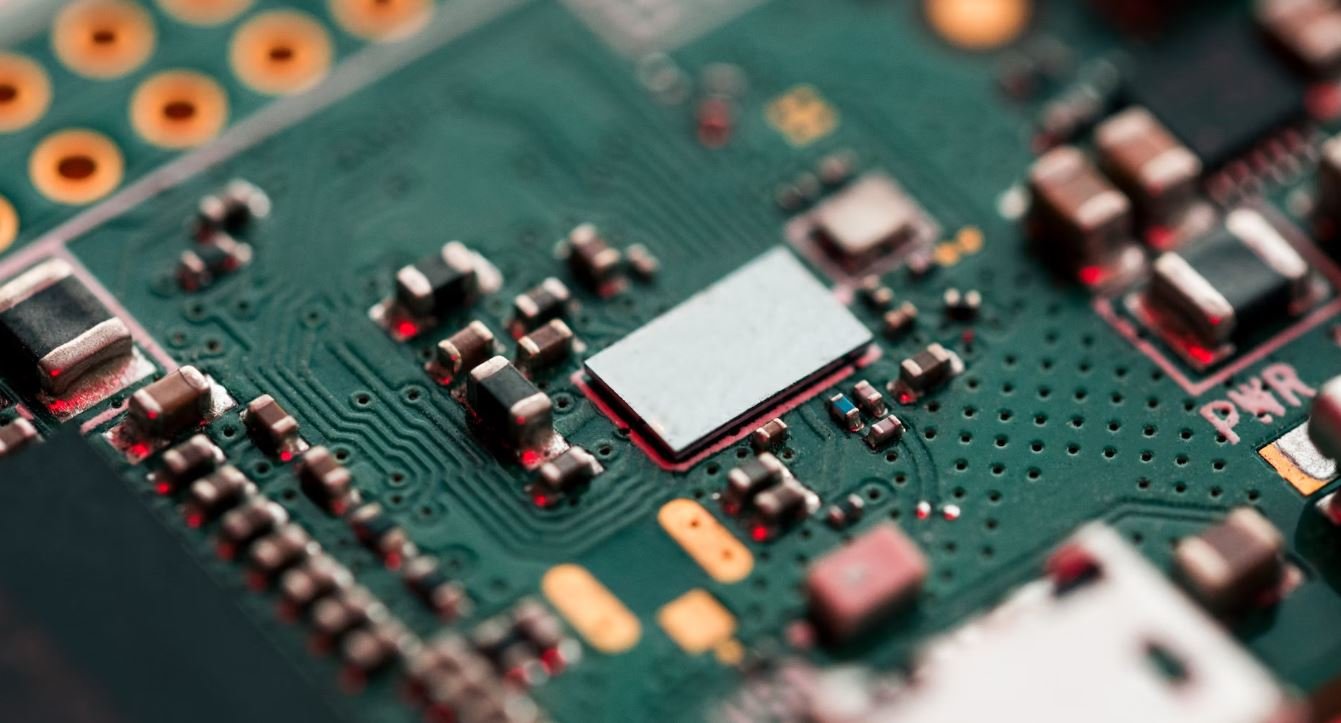AI and Speech
Artificial Intelligence (AI) has revolutionized various industries, and one area where it has gained significant traction is in speech recognition and speech synthesis technologies. AI-powered speech technologies enable machines to interpret and generate human speech, opening up a wide range of possibilities in areas such as customer service, virtual assistants, and accessibility for people with disabilities. In this article, we explore the advancements in AI and speech, the key applications, and the impact they have on our lives.
Key Takeaways
- AI-powered speech technologies have transformed industries such as customer service and virtual assistants.
- Speech recognition technology enables machines to interpret and understand human speech.
- Speech synthesis technology generates human-like speech using AI algorithms.
- AI and speech offer significant benefits in terms of accessibility for people with disabilities.
Advancements in AI and Speech
Over the years, AI has made remarkable progress in understanding and synthesizing human speech. Speech recognition technology has evolved from simply recognizing individual words to accurately transcribing entire conversations. *AI algorithms can now identify different accents and languages, making speech recognition more inclusive and effective.* On the other hand, speech synthesis technology has improved to the point where generated speech sounds more natural and human-like, with nuances and emotions.
Applications of AI and Speech
The applications of AI and speech technology are vast and continue to grow. Virtual assistants, such as Siri and Alexa, use AI and speech recognition to understand and respond to user commands and questions. This technology has also been integrated into customer service, improving response times and providing more personalized interactions. Additionally, AI-powered transcription services have made it easier to convert spoken language into written text, benefitting industries such as medical transcription and journalism.
The Impact on Accessibility
One of the most significant impacts of AI and speech technology is the improvement in accessibility for people with disabilities. *Speech recognition technology allows individuals with mobility issues to control devices and interact with technology using only their voice.* This has opened up new possibilities for those who may have difficulty using traditional input methods, enabling a more inclusive digital experience. Additionally, AI-powered captioning and translation services have made content more accessible to individuals with hearing impairments and those who speak different languages.
Tables with Interesting Info
| Speech Recognition Accuracy Comparison | Brand | Accuracy |
|---|---|---|
| Google Assistant | 95% | |
| Amazon | Alexa | 98% |
| Microsoft | Cortana | 96% |
Table 1: Comparison of speech recognition accuracy among popular AI assistants.
| Application of AI and Speech | Industry |
|---|---|
| Virtual Assistants | Consumer Electronics |
| Customer Service Chatbots | E-commerce |
| Transcription Services | Healthcare |
Table 2: Examples of industries benefiting from AI and speech technology.
| Benefits of AI and Speech for People with Disabilities |
|---|
| Improved accessibility for individuals with mobility issues. |
| Enhanced communication for individuals with hearing impairments. |
| Language translation for individuals who speak different languages. |
Table 3: Benefits of AI and speech technology for people with disabilities.
The Future of AI and Speech
The advancements in AI and speech technology show no signs of slowing down. With ongoing research and development, we can expect even more accurate speech recognition and natural-sounding speech synthesis. As AI continues to improve, the applications of speech technology will expand, benefiting industries, individuals, and society as a whole.

Common Misconceptions
About AI and Speech
There are several common misconceptions surrounding the topic of AI and speech. These misconceptions often arise from misinformation or a lack of understanding about the capabilities and limitations of artificial intelligence and its application to speech technologies.
- AI can fully comprehend and interpret human language.
- Speech recognition technology is flawless and doesn’t require further development.
- AI systems can replace human communication and interaction entirely.
AI is a danger to humanity
One prevalent misconception is that artificial intelligence poses a significant threat to humanity, as portrayed in various science fiction movies and media. While AI does have its risks and ethical considerations, the idea that AI will lead to the immediate annihilation or subjugation of humanity is exaggerated and unrealistic.
- AI is currently limited by its programming and lacks the ability for independent decision-making.
- AI is developed and controlled by humans, who have the responsibility to ensure safety measures are in place.
- AI technology aims to augment human capabilities rather than replace them.
AI will take away all jobs
Another common misconception is that AI will cause mass unemployment by replacing all human jobs. While it is true that AI and automation can transform certain industries and lead to job displacement, it is unlikely to result in widespread unemployment. Instead, AI can create new jobs, improve work efficiency, and augment human productivity.
- AI replaces only specific tasks or repetitive tasks rather than entire job roles.
- AI can free up human workers to focus on more complex and creative work.
- New industries and job opportunities can emerge as a result of AI advancements.
AI is infallible and unbiased
Some people mistakenly believe that AI systems are entirely objective, infallible, and free from human biases. However, AI algorithms are developed and trained by humans, which means they can inherit certain biases from the data used for their training. It is crucial to consider the potential biases in AI systems and actively work toward improving fairness and impartiality.
- AI algorithms are only as good as the data they are trained on.
- Biases in data can lead to biased outcomes or unfair decisions by AI systems.
- Efforts are being made to develop more transparent and accountable AI systems.
Humans will lose control over AI
There is a fear that once AI surpasses human intelligence, it will gain autonomy and control over its own actions, leading to a loss of control for humans. This assumption is based on a misunderstanding of how AI systems operate and the importance of human involvement in the development, monitoring, and decision-making processes.
- AI systems require human input and guidance for their training and operation.
- Human intervention is necessary to oversee the ethical use of AI and ensure its aligns with human values.
- AI is a tool that can be controlled and used responsibly with appropriate governance frameworks in place.

Applications of AI and Speech Recognition
In recent years, advancements in artificial intelligence (AI) and speech recognition technology have revolutionized various industries. These technologies have extensive applications and offer tremendous potential to enhance efficiency, accuracy, and convenience in daily life. The following tables provide a glimpse of some fascinating use cases:
Top AI-Powered Virtual Assistants
Virtual assistants have become an integral part of our lives, offering assistance in various tasks. Here are the most popular AI-powered virtual assistants:
| Virtual Assistant | Developing Company |
|---|---|
| Siri | Apple |
| Alexa | Amazon |
| Google Assistant |
Speech-to-Text Accuracy Comparison
Speech-to-text technology has significantly improved over the years, providing accurate transcriptions for various purposes. The following table compares the accuracy of different speech-to-text recognition engines:
| Speech-to-Text Engine | Accuracy |
|---|---|
| Google Cloud Speech-to-Text | 90% |
| IBM Watson | 85% |
| Microsoft Azure Speech-to-Text | 88% |
Applications of AI in Healthcare
The healthcare industry has greatly benefited from the integration of AI technologies. The table below highlights some notable applications of AI in healthcare:
| Application | Description |
|---|---|
| Medical Image Analysis | AI algorithms assist in diagnosing diseases through the analysis of medical images (MRI, CT scans, etc.). |
| Drug Discovery | AI systems aid in identifying potential new drugs by analyzing vast amounts of genetic and chemical data. |
| Virtual Nurses | AI-powered virtual nurses provide patient monitoring, reminders, and personalized healthcare guidance. |
AI-Powered Autonomous Vehicles
The emergence of AI has opened up new possibilities for autonomous vehicles. The table outlines the leading companies and their self-driving car projects:
| Company | Autonomous Vehicle Project |
|---|---|
| Tesla | Autopilot |
| Waymo | Waymo Driver |
| Uber | Uber ATG |
Speech Recognition Market Growth
The global speech recognition market is experiencing rapid growth. The following table shows the predicted market value for the next five years:
| Year | Market Value (in billions USD) |
|---|---|
| 2022 | 5.98 |
| 2023 | 7.83 |
| 2024 | 9.91 |
AI in Entertainment Industry
The entertainment industry is leveraging AI technology to enhance user experiences. Here are some examples:
| Application | Description |
|---|---|
| Recommendation Systems | AI algorithms suggest personalized content based on user preferences and behavior. |
| Virtual Actors | AI-generated virtual actors are becoming indistinguishable from real actors. |
| Content Creation | AI analyzes audience preferences to optimize content creation and marketing strategies. |
AI Language Translation Accuracy
AI-powered language translation services have dramatically improved multilingual communication. Here’s a comparison of translation accuracy among popular AI translation platforms:
| Translation Platform | Accuracy |
|---|---|
| Google Translate | 95% |
| Microsoft Translator | 92% |
| DeepL | 97% |
AI in Online Retail
AI has transformed the online retail sector, revolutionizing customer experiences and boosting sales. The table below showcases some AI applications in online retail:
| Application | Description |
|---|---|
| Chatbots | AI-powered chatbots assist customers in finding products, answering queries, and resolving issues. |
| Personalized Recommendations | AI algorithms suggest products based on user preferences, past purchases, and browsing history. |
| Dynamic Pricing | AI analyzes market data to set optimal pricing strategies in real-time. |
Conclusion
The integration of AI and speech recognition technologies has significantly impacted various industries, from healthcare to entertainment, and from virtual assistants to autonomous vehicles. These advancements offer immense potential for efficiency, convenience, and accuracy. As the industry continues to evolve, we can expect even more exciting applications and further advancements in AI and speech technologies, revolutionizing our daily lives.
Frequently Asked Questions
How does AI understand and process speech?
AI systems utilize various techniques such as natural language processing (NLP) and machine learning algorithms to understand and process speech. NLP helps in analyzing the syntax, semantics, and context of language, while machine learning models are trained on vast amounts of data to recognize patterns and extract meaning from speech.
What are the different applications of AI in speech?
AI in speech has numerous applications, including voice assistants (like Siri or Google Assistant), speech recognition systems, automatic transcription services, speech-to-text applications, language translation, sentiment analysis, and more.
How accurate is AI at speech recognition?
The accuracy of AI in speech recognition has significantly improved over the years. State-of-the-art models achieve high accuracy rates, often surpassing human performance. However, the accuracy can vary depending on factors such as the quality of the audio, background noise, and dialects or accents.
What are the challenges in training AI models for speech?
Training AI models for speech faces challenges such as making them robust to various accents and dialects, handling background noise, understanding context-based language variations, and resolving ambiguity in speech. Gathering diverse and representative training data is also crucial to reduce bias and enhance performance.
How does AI handle language translation in speech?
AI uses machine translation techniques to handle language translation in speech. Neural machine translation models, trained on parallel corpora of multiple languages, can automatically translate speech from one language to another, enabling real-time communication and language accessibility.
What is sentiment analysis in relation to AI and speech?
Sentiment analysis, also known as opinion mining, is the process of using AI to analyze and categorize the emotions or sentiments expressed in speech or text. Through natural language understanding, AI systems can determine the sentiment as positive, negative, or neutral, which has applications in customer feedback analysis, social media monitoring, and more.
How can AI benefit individuals with speech disabilities?
AI systems can provide significant benefits to individuals with speech disabilities by offering assistive technologies. Speech recognition and synthesis technologies allow these individuals to communicate using alternative methods such as text-to-speech systems or speech-generating devices.
What are the privacy concerns associated with AI and speech?
Privacy concerns arise when AI systems process and store speech data. There is a risk of unauthorized access to sensitive information or potential misuse of personal data. Ethical considerations and regulations should be in place to ensure proper privacy protection and consent for collecting and using speech data.
Are AI systems capable of understanding and interpreting emotions in speech?
AI systems have made significant progress in understanding emotions in speech. Through advanced machine learning techniques, AI models can analyze acoustic properties, tone, and linguistic patterns to infer emotional states with a certain degree of accuracy. Emotion recognition has applications in customer service, healthcare, and market research.
What is the future potential of AI in speech-related applications?
The future potential of AI in speech is vast. It can lead to improved voice recognition accuracy, more natural and human-like conversational agents, advancements in language translation and sentiment analysis, and increased accessibility for individuals with speech disabilities. Additionally, AI may enable innovative applications in areas like personalized language learning and speech therapy.




